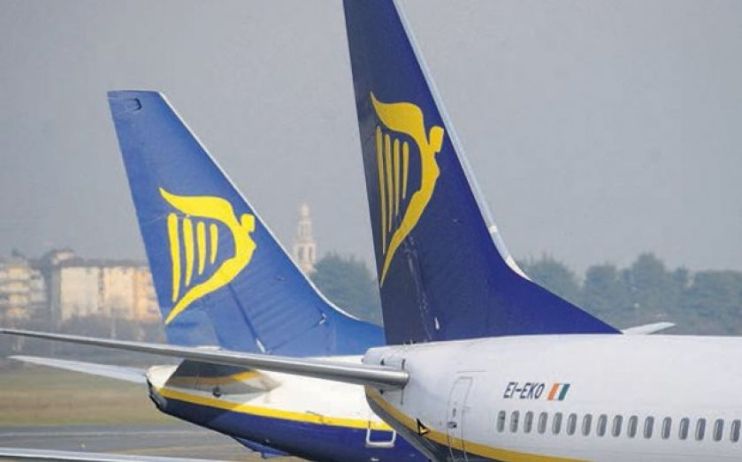Ryanair warns of service cuts, blaming Boeing 737 Max ban

Ryanair today warned investors it has been forced to reschedule summer 2020 due to a delay in the delivery of new Boeing 737 Max planes.
The budget flyer had ordered 58 Max 200 models from Boeing in time for its summer 2020 schedule, but now expects just 30 to be ready in time.
Read more: Airline stocks take a hit from Ryanair profit drop
That will more than halve Ryanair’s growth rate next summer, from an expected seven per cent to just three per cent.
Meanwhile passenger numbers will fall from 162m to 157m for the full year to March 2021.
As a result Ryanair warned it will have to make “some base cuts and closures”, not only for summer 2020 but also for winter this year.
“We are starting a series of discussions with our airports to determine which of Ryanair’s underperforming or loss making bases should suffer these short term cuts and/or closures from November 2019,” chief executive Michael O’Leary warned.
“We will also be consulting with our people and our unions in planning and implementing these base cuts and closures, which are directly caused by the B737 MAX delivery delays to the B737 MAX programme.”
The 737 Max 200s Ryanair has ordered are a variant of the 737 Max aircraft the US banned from skies following two fatal crashes linked to issues with the model’s anti-stall software.
Boeing is currently testing these models with the Federal Aviation Administration (FAA), but they may not return to service before December.
Boeing hopes to submit the planes for certification by September, returning them to service shortly afterwards, Ryanair said.
But O’Leary added: “We believe it would be prudent to plan for that date to slip by some months, possibly as late as December.”
Because Ryanair’s ordered Max 200 models are a variant, the FAA must also approve these for commercial use, a process that may not conclude for two months after the 737 Max is ruled fit for flight.
The International Air Transport Association warned in May that Boeing’s 737 Max would not return to the skies until at least August.
Meanwhile the FAA discovered a fresh “potential risk” Boeing must fix in the jet in late June as the manufacturer works to upgrade the anti-stall software.
O’Leary told investors that his airline is targeting summer 2021 for a return to regular growth.
“Ryanair will continue to work with Boeing and the European Union Aviation Safety Agency to recover these delivery delays during the winter of 2020, so that we can restore our growth to normal levels in summer 2021,” he said.
The Ryanair share price rose 1.3 per cent as analysts pointed to the lack of seats as a factor that could push up prices.
Neil Wilson, chief analyst at Markets.com, said: “It’s not all bad – stripping out a load of excess capacity should boost pricing power and lift margins for others, as well as for Ryanair,” he said.
“The read across for the sector should be positive as a result of the loss of competitor capacity boosting their loads and pricing.”
Read more: Norwegian Air boss quits as airline reels from 737 Max delays
Liberum analyst Gerald Khoo agreed that Ryanair’s rivals will benefit, saying: “The read across to other European airlines in the short haul market is positive.
“This is especially the case for those that do not have the Max in their current fleets or scheduled to receive deliveries in the near future.”
A Boeing spokesperson said: “We deeply regret the impact the 737 Max grounding is having on Ryanair and their passengers. Boeing is working very closely with the FAA on the process they have laid out to certify the 737 Max software update and return the Max to service. We will submit the final software package to the FAA once we have satisfied all of their certification requirements.
“The regulatory authorities determine the process for certifying the Max software and training updates and the timing for lifting the grounding order. We will not speculate on their schedule.
“With safety as our top priority, we are continuing to work with the FAA and other regulators to complete as many elements of the certification process as possible in parallel with the development of the software update.”